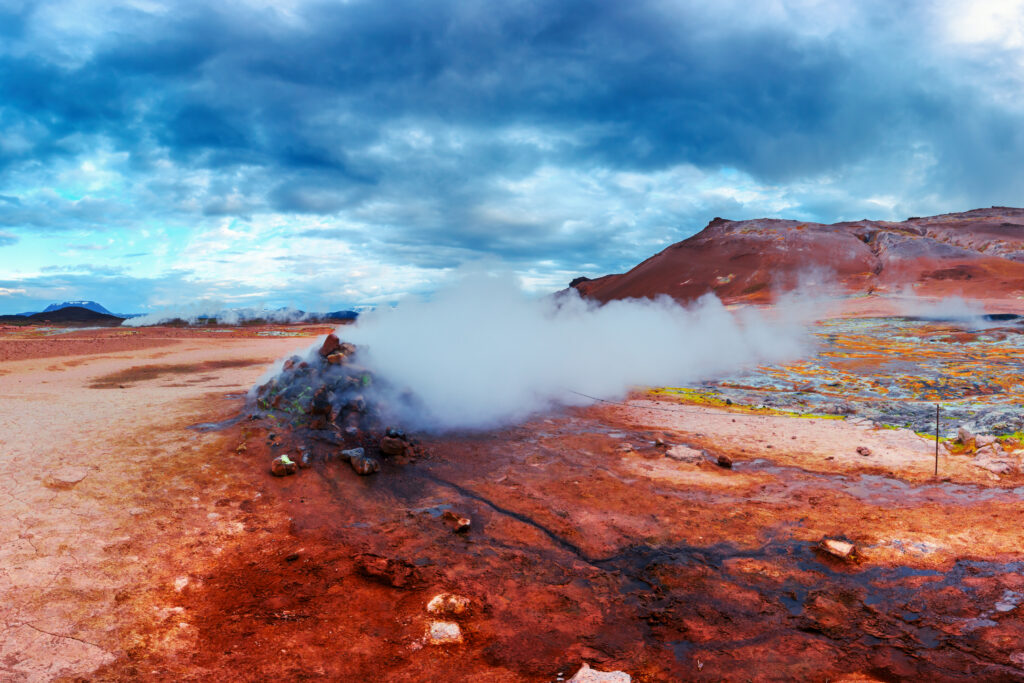Earlier this week, tech giant Meta—the parent company of Facebook and Instagram—unveiled plans to buy a lot of electricity from an innovative power plant to be built by geothermal energy start-up Sage Geosystems. The location of the new-fangled facility remains sketchy. Somewhere east of the Rockies was all the companies said.
But there’s another, even more important, location worth noting: Sage Geosystems is based in northern Houston, not far from Greenspoint Mall. Hop on Interstate 45 and head about fifteen miles south, to the downtown skyscrapers, and you’ll find the headquarters of Fervo Energy, another geothermal start-up, which recently announced an even larger power deal with Southern California’s largest utility.
Arguably the two most promising companies in what is arguably the most promising new source of energy are rooted in Houston. That’s great news for the future of Texas—and it makes all the sense in the world. Today’s geothermal is the precocious younger sibling of fracking—deploying the same technology that turbocharged aging oil-and-gas fields and turned the United States into a fossil fuel powerhouse. And nowhere in the country sits a greater concentration of the skilled labor and technological tools behind fracking than in Texas.
Hydraulic fracturing pushes vast amounts of water deep into the earth to create an extensive network of cracks in deeply buried rocks, from which hydrocarbons can be pumped. Modern geothermal energy producers likewise hammer such underground fractures, except their goal is releasing the earth’s heat in order to turn the injected water into steam.
Three years ago, I wrote about how geothermal companies were using the same techniques, geological expertise, and even supply chains as the oil-and-gas drillers. At the time, they were squeamish about being called frackers, because of the public distaste for the negative environmental effects of the technology. That timidity seems to be vanishing. Speaking to the New York Times this week, Sage CEO Cindy Taff said, “it’s basically the same fracking technology . . . The difference is that we’re going after clean heat instead of hydrocarbons.”
The incumbent energy industry sees the connection. Oklahoma-based Chesapeake Energy and Houston-based drilling rig fleet operator Nabors Industries are both backing Sage Geosystems, while Oklahoma’s Devon Energy is an investor in Fervo.
“All the start-ups want a presence in Houston because they want oil-and-gas investment, and oil-and-gas investment money is coming from Houston,” says Jamie Beard, executive director of Project InnerSpace, a nonprofit focused on promoting the growth of geothermal energy. She described to me that Houston has emerged as a fertile breeding ground for geothermal innovation, with ideas being swapped at after-work happy hours. It seems reminiscent of the late twentieth-century scene in Fort Worth, where petroleum engineers struggling to extract gas from tight rock formations got together over golf games and barbecue to share what was working and what wasn’t. Those conversations led to the eventual breakthrough in developing the fracking technique that powers the ongoing Texas oil boom.
Today’s advanced geothermal companies, which have attracted abundant buzz and investment capital, are pushing the geothermal envelope. Older forms of the technology only work in locations where subterranean conditions naturally create superhot steam, such as California and Indonesia—but nowhere in Texas. The largest geothermal facility in the world is the Geysers, located a couple of hours north of San Francisco. It is owned and operated by Calpine, which is headquartered in a Houston skyscraper. Sage says its technology works pretty much anywhere there are hot, dry rocks—about 35 percent of the continental United States, including most of the Rio Grande Valley and a swath up Texas up to Texarkana.
Houston should count its lucky stars that there’s an emerging hub of geothermal activity along the city’s bayous and freeways. The public and energy-hungry companies (looking at you, Meta and other tech firms in need of massive data centers to enable the AI-led futures they envision) want electricity that is affordable, abundant, reliable, clean, scalable, and domestic. Most energy sources tick only a couple of those boxes. Geothermal is the rare technology that ticks most of them, and its costs have nowhere to go but down as the industry scales up.
How many jobs could geothermal create? How much economic activity? We won’t fully know the answer until the 2030s, most likely, but Houston will undoubtedly benefit. This newly emerging energy sector is much like the city’s summer weather: hot and steamy.
Source: https://www.texasmonthly.com/news-politics/houston-geothermal-energy-fracking/

